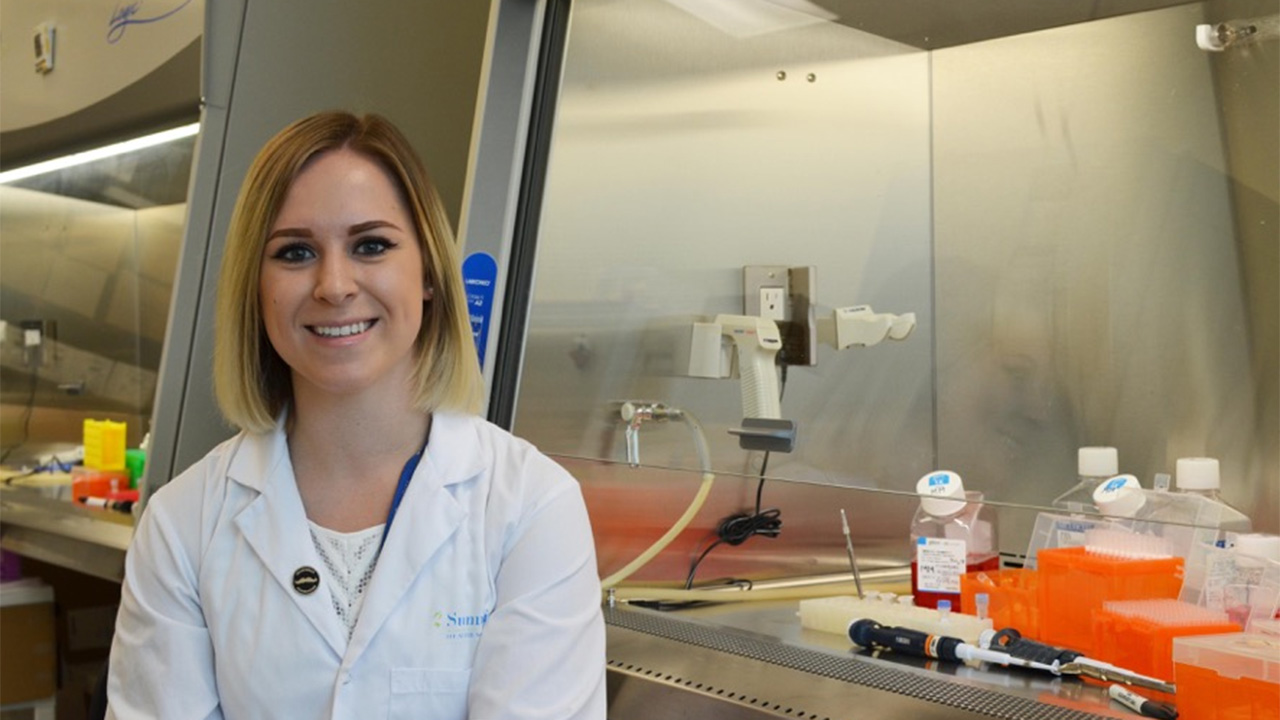Second time's the charm
Car, train, subway and bus—those were the modes of transportation Michelle Meringer took every day last summer to get from her home in Burlington to Sunnybrook Research Institute (SRI) where she worked as a student in Dr. Stanley Liu’s lab. The daily commute took two hours. This year Meringer is living at York University’s Glendon campus for her second placement in Liu’s lab as part of the D+H SRI Summer Student Research Program. “Now it’s a 15-minute walk,” she says. “It’s great.”
The length of her commute isn’t the only thing that’s different about this year. “When I came in last summer as a first-year student, I knew absolutely nothing,” says Meringer, who will be starting her third year at Queen’s University in the fall. “Coming back, it took me about a week to get back in the swing of things and to be completely independent for the rest of the summer. It really shows the value of experience.”
This summer she is looking for new RNAs that contribute to radiation resistance in prostate cancer cells, a main research focus in the Liu lab. Liu is a radiation oncologist and a scientist in the Odette Cancer Research Program at SRI whose work aims to elucidate the mechanisms by which tumours become resistant to radiation, or radioresistant.
Meringer focused on two, long, noncoding RNAs—long pieces of genetic material that do not encode proteins—that were found to be at high levels in radioresistant prostate cancer cells. To investigate how these RNAs were affecting radiation resistance, she used a technique called clonogenic assays to measure how effectively different types of cells could withstand radiation. These assays work by subjecting cells with and without high levels of these two RNAs to radiation and measuring the number of surviving cells after treatment. She was disheartened when, after weeks of work, her results indicated that these two RNAs had no role in radioresistance. “I was a bit discouraged,” she says. “But it was also encouraging because I kept getting the same data. Clonogenic [assays] were a new experiment for me so it showed that at least I have the skills and techniques down.”
Having hit a dead end with her first project, Meringer switched directions and zeroed in on two new genes that seem to be involved in radioresistance. The expression of these two genes is 96% lower in prostate cancer cells that are impervious to the deadly effects of radiation compared to radiosensitive cells. After reducing the expression of these two genes in the susceptible cells, Meringer observed that they became more immune to radiation, much like the original radioresistant cells. This is the first time that either of these genes has been linked to radiation resistance in prostate cancer. She is repeating these experiments in two additional types of prostate cancer cells to see if the results will hold true. “I’m actually really excited,” she says. “I’m hoping [that] before my time is done here I can see data from all three cell lines that I’ve worked with this summer. [The results] would be even more significant if we see it in all three.”
Meringer is hoping to go to medical school after her undergraduate degree, but says her experience at SRI has opened the possibility of completing a master of science. Through the ups and downs of her project this summer, she has already learned an important lesson. “Nothing is ever perfect in research,” she says. “It’s better to learn now how to overcome obstacles.” Whether she pursues a master of science or a medical degree next, it’s a lesson that will serve her well.
Michelle Meringer received a D+H Summer Studentship Award.



